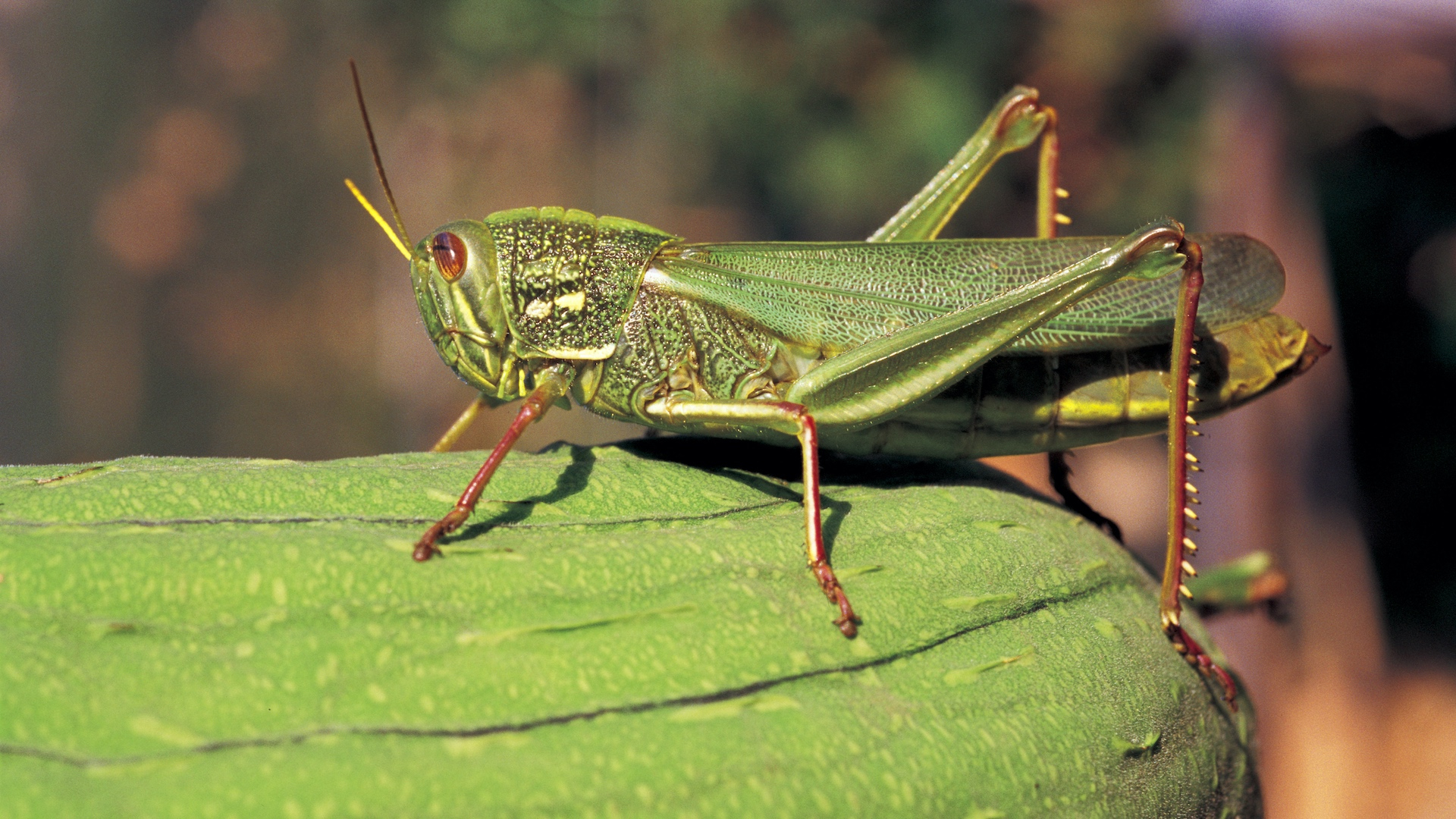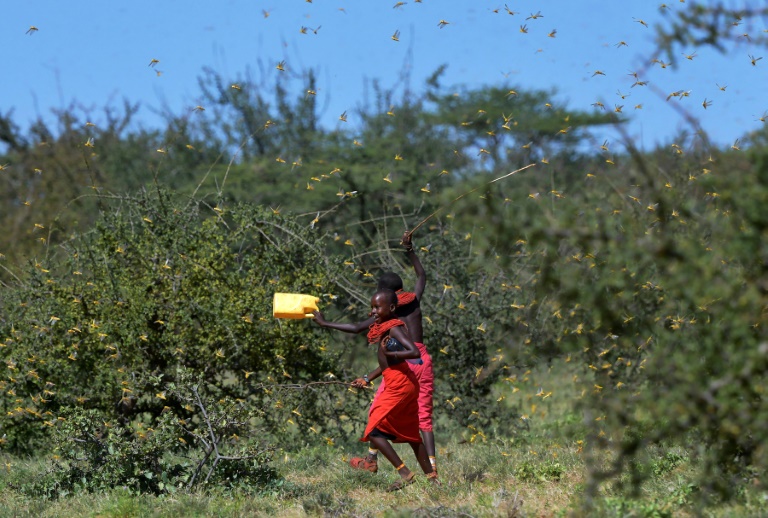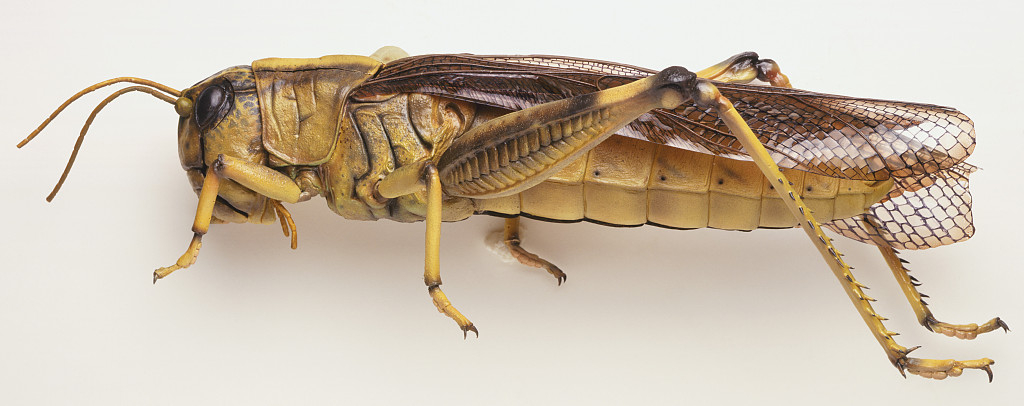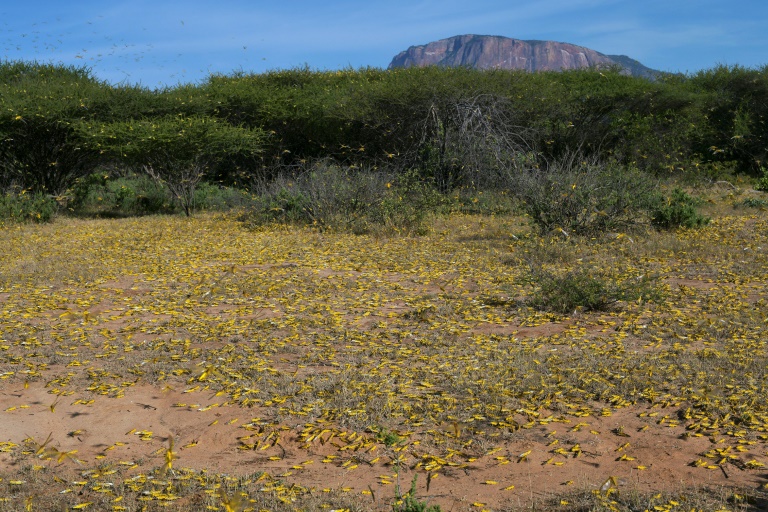00:38

East Africa is bracing for a third outbreak of desert locusts, with billions of the destructive insects about to hatch and threaten food supplies in a region already reeling from damaging rains and the coronavirus pandemic.
Spurred by favorable weather conditions, the migratory pests have descended on East Africa in record numbers since late 2019 and another wave is about to take to the skies despite the concerted use of pesticides.
"Tens of thousands of hectares of cropland and pasture have already been damaged across the Horn and East Africa," the International Rescue Committee said in a report this month, noting even a small swarm could devour the same amount of food in a day as approximately 35,000 people.
In Ethiopia between January and April, locusts destroyed 1.3 million hectares of grazing land and nearly 200,000 hectares of crops, resulting in the loss of 350,000 tonnes of cereals, the Intergovernmental Authority on Development (IGAD), the East Africa regional organization, said in a June report.
But these initial estimates, corresponding to the first and second locust waves, do not fully capture the extent of damage as field surveys have been hindered by the coronavirus pandemic.

Locasts can eat their body weight in food in a single day. /AFP
Locasts can eat their body weight in food in a single day. /AFP
"Until we get extended figures, I would just say Ethiopia was definitely the most affected in terms of croplands, then Somalia," said Kenneth Kemucie Mwangi from Delivering Climate Services to Eastern Africa (ICPAC), the climate monitoring program of IGAD.
Somalia, which like Kenya experienced heavy rains and flooding in recent months that left scores dead, had already declared a "national emergency" against the locust scourge in February.
So far East African neighbors Tanzania, Rwanda and Burundi have been spared the insects, which travel in huge swarms billions of insects strong, and can migrate 150 kilometers (90 miles) in a single day.
How can an insect with an average mass of two grams be so destructive?
Locust plagues often come with serious drought. The insect prefers to lay eggs in dry and loose soil with lower moisture content. During dry seasons, the groundwater level falls, offering more loose soil for the locusts to reproduce. Nearly 5,000 clusters of eggs can be found within a square meter, with more than 100 eggs per cluster.

A desert locust /VCG Photo
A desert locust /VCG Photo
The reproduction rate of some species is two to five times per year, which adds to the enormous figure. On the dry and sparse grassland, more locusts mean less living space. When the population reaches a certain density under suitable conditions, serotonin in their brains drives them from being solitary to gregarious. They "migrate" together to find new food sources in more moist areas, thus causing an outbreak.
In addition, global warming means warmer winters, therefore more hibernating eggs can survive and hatch in the spring, raising the possibility of the plague next year.
The desert locust is one of the most dangerous of the species. It is the main culprit of the plague that has hit eastern Africa.
Desert locusts can travel between 100 and 200 kilometers per day. A single swarm can cover up to 1,200 square kilometers and can contain between 40 and 80 million locusts per square kilometer.
400 billion killed
The World Bank in May approved a 500 million U.S. dollars (445 million euro) program to help countries vulnerable to hunger in East Africa fight the pests eating their way across the region.

Locusts have destroyed tens of thousands of hectares of cropland. /AFP
Locusts have destroyed tens of thousands of hectares of cropland. /AFP
Pesticide spraying operations have been underway since February, helping wipe out staggering numbers of the insects capable of multiplying their numbers 20-fold every three months.
"About 400,000 hectares were controlled in the region between January and mid-May. We estimate that 400 billion locusts have been exterminated," said Cyril Ferrand, a Nairobi-based expert with the Food and Agriculture Organization of the United Nations (FAO).
"We can't estimate the total population because we don't have access to certain areas, especially in Somalia. But we know that it's been seriously reduced."
In Kenya, where swarms blotted out the sky for miles in recent months, locusts have retreated to just three semi-arid counties in the country's far north.
Fortunately too, forecasts of dire hunger did not materialize as the first swarm to arrive from Yemen in 2019 spared the end-of-year harvest, as the crops were already too mature.
The insects, which can eat their body weight in food in a single day, strip the leaves but not seeds.
"We have not seen signs of a large scale impact on food security," says Lark Walters of the Famine Early Warning Systems Network, a U.S.-funded food security monitoring organization.
(With input from AFP)
Read more:
https://news.cgtn.com/news/2020-05-14/UN-warns-of-locust-comeback-in-East-Africa-Qu3wo8FTb2/index.html
https://news.cgtn.com/news/2020-02-14/Locust-plague-One-of-the-worst-agricultural-disasters-O3Nm1mx476/index.html